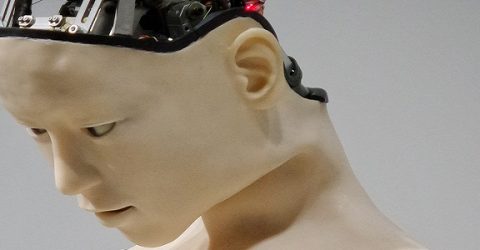How do chatbots work?
Chatbots are a common sight on many websites, and these automated AI programs can be useful in lieu of speaking to a real person

It’s common when visiting an ecommerce or service provider’s website to hear a musical note signalling the appearance of a pop-up window at the bottom of your screen.
This window typically displays a message along the lines of “Hi, how can I help you today?”
It might be accompanied by someone’s name or a photograph of a smiling person.
Yet in reality, this is an entirely automated process, with nobody at the other side of the conversation.
What you’re seeing is a chatbot – a rudimentary example of artificial intelligence, deployed on websites to encourage communication and resolve basic queries.
But how do chatbots work? And is it really worth entering into a conversation with a robotic assistant?
Chatting away
Also known as conversational agents or conversational AI, a chatbot draws on the principles established by other bots.
Bots are programmed to complete a specific task very effectively – achieving perfect scores in computer games, crashing network servers, or crawling websites looking for content.
Likewise, a chatbot is only equipped for the task of simulating a conversation, by answering requests or dealing with enquiries entered into an app or browser window.
Similar to smart speakers and virtual assistants, chatbots use word recognition to identify terms or phrases.
They match this input against a database of pre-set replies, before displaying what they believe to be the most appropriate result.
If someone types the words ‘opening times’ into a chatbot, it might retrieve and publish a response listing the company’s opening hours.
If it spots the word ‘complain’ (or any variant, like ‘complaint’ or ‘complaining’), it could transfer the conversation to a real person in a contact centre.
However, if the bot can resolve the query itself, the contact centre goes unburdened and the consumer should be none the wiser about whether they’re talking to a computer or a person.
Of course, it’s generally easy to tell whether you’re speaking to a person or a robot.
Bots tend to use very formal language, like “Hello, and how may I help you today?”
They can be flummoxed by an unexpected response, colloquialisms or spelling mistakes, asking you to rephrase the question or retype your last entry.
By contrast, anyone with a decent grasp of English ought to know how to react and respond.
The science behind the speech
Most interactions with chatbots involve typing questions and receiving generic responses.
Bots use AI technologies including natural language processing to interpret what they’re being asked.
Imagine Alexa or Siri, but in written rather than verbal form.
They can also harness machine learning to improve over time, refining their performance based on past results and user feedback (“was this helpful?”, followed by Yes/No boxes).
Chatbots automatically generate user feedback without the participant even realising, which may be used to improve other client-facing platforms or services.
If half a chatbot’s queries are about a company’s returns policy, the firm’s website and marketing literature clearly aren’t getting the message across.
Beyond the customer service sector, some bots have become highly sophisticated.
In 2016, Disney released a chatbot to accompany its film Zootopia, leading young sleuths through a crime-solving story with extensive support for varied inputs and responses.
UNICEF has used chatbots to conduct polls on everything from migration rights to child exploitation, while medical chatbots can identify ailments and recommend courses of action.
As the algorithms powering these bots evolve, we’re likely to see more online interactions being handled automatically, and with greater sophistication.
It may not even be possible to tell you’re conversing with an algorithm…






